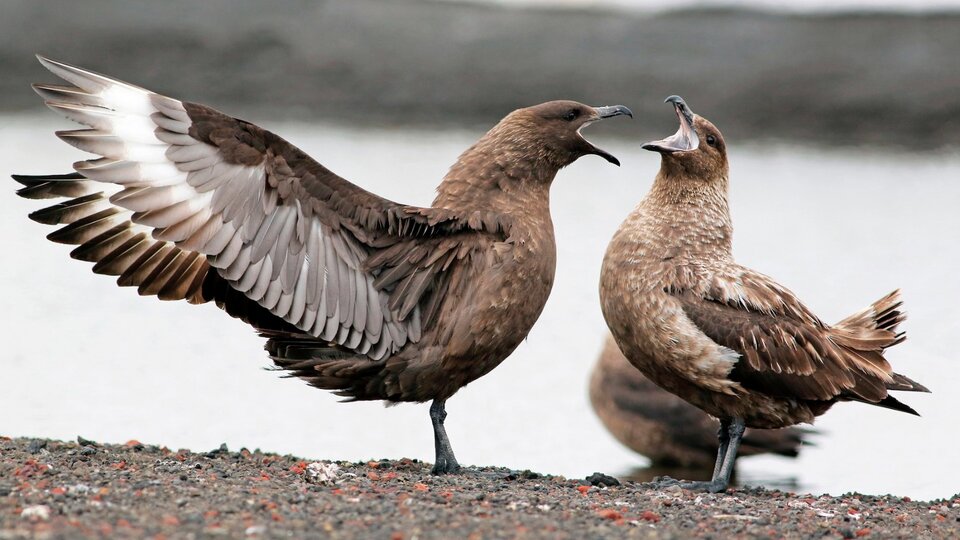go through first Already reported Bird flu appears in Antarctica, Argentinian scientists play leading role. Near the Primavera base, they found dead skuas, birds that clearly showed signs of succumbing to the virus. They then contacted international organizations, and finally, after laboratory tests proved the cause of death, Spanish investigators were able to communicate with international organizations. News spread around the world.
“Samples from the bird found at the Primavera base tested positive for avian influenza and are pathogenic. Although the virus has only been found in migratory birds so far, it is worrisome for humans because we are only in the chain and we are mammals susceptible to infection.. This is the first time avian influenza has been discovered and confirmed in Antarctica, and we have played a very important role.“, He said Page 12 doctor Martin Ansaldo, with reference to the Argentine Antarctic Institute (IAA). And, along the same lines, he elaborated: “The virus is mutating; If jumping from birds to sea lions has been observed, it would be easy to do the same for humans.. Simply put, this is a type of influenza that, if not treated properly, can ultimately have complicated consequences. “
The dead skuas, which ended up being infected with the H5 avian influenza virus, are dark brown birds with thick beaks usually seen on the white continent.. It is estimated that at least 450 species of wild birds can transmit pathogens to mammals. As experts explain, these people are unaware of any kind of geographical barriers; that is why when the first cases began to be detected in the Northern Hemisphere in the middle of last year, alarm bells were sounded in Antarctica. They knew the virus would arrive sooner or later.
“We started cautiously in the middle of last year. We already have information about it coming from the Northern Hemisphere, because that’s where avian influenza comes from. It affects species in Peru, Ecuador, Argentina’s Atlantic coast and Patagonia.. Senasa noticed the problem with poultry and turned to sea lions and elephant seals.Then, as a final stop, something was reported on the radio Falkland Islands at the end of November, until finally reaching Antarcticasaid Ansaldo, who studies the response of Antarctic marine life to climate change and human activities.
Following in the footsteps of an elusive virus
In September last year, it was reported that avian influenza spread by migratory birds affected and ended the lives of Argentine sea lions.At that time, several jurisdictions on the Atlantic coast and in Patagonia decided Stay close to the beach so people are not exposed to the virus.In fact, it was so widespread that experts consulted at the time dubbed the phenomenon Pantheriai.e. a pandemic, but mostly affecting animals.
Around this time, Argentina’s base in Antarctica began developing operational and care protocols so that researchers studying possible cases of infectious diseases in the world’s southernmost tip would not face any danger. “We want the people living on Antarctic bases to be protected. Imagine that the water supply is taken from a nearby lagoon, where birds generally stay for a long time to bathe. ” This is how they receive clothing and items to be sanitized so they can work properly.
“Everything was under control. However, towards the end of the year, skua carcasses started to appear at the Orkney base. And then there was a cormorant, which we saw was quite affected. Things were moving forward, so we decided that scientists would just monitor and observe. We have all the suspicions about this case, but we can’t be sure that these species are actually affected by avian influenza. We also have no equipment on the ground. ”
Meanwhile, cases were also detected at the Esperanza base and Primavera. They selected samples and spoke to colleagues from Spain who were studying cases at the Antarctic base “Gabriel de Castilla” on Deception Island, with the aim of being able to prove their belief with strong evidence . Ansaldo details: “In mid-January, Dr. Quesada de Coral contacted us and we had a Zoom meeting. There they told us that there was a group of biologists on Deception Island, which is near us. , was specially sent to conduct such experiments..So after our scientists collect the samples, we send them out via Navy ships“.
Relevant tests (PCR, etc.) were carried out from this website and this news of international importance was finally confirmed. “The news circulating relates to reports of disease-causing samples found in dead birds.The result of an international effort led by Argentinian scientists”, emphasized the Argentinian expert.
Diagnosis and prevention
Avian influenza is spread through the mouth, respiratory tract and secretions (saliva or mucus) and excreta, such as urine or feces (which remain on surfaces for a period of time). This identification is crucial because, in the future, it can contribute to preventing the spread of the virus. Just like the coronavirus during the pandemic, rapid diagnosis of patients can make it possible to act accordingly and implement isolation measures.
Humans’ depredation of nature, extractive production methods, advancements on the agricultural frontier, and their actions to stimulate climate change during this period resulted in more frequent contact with animals than ever before. If contact with the species increases, so will their disease.
(email protected)

